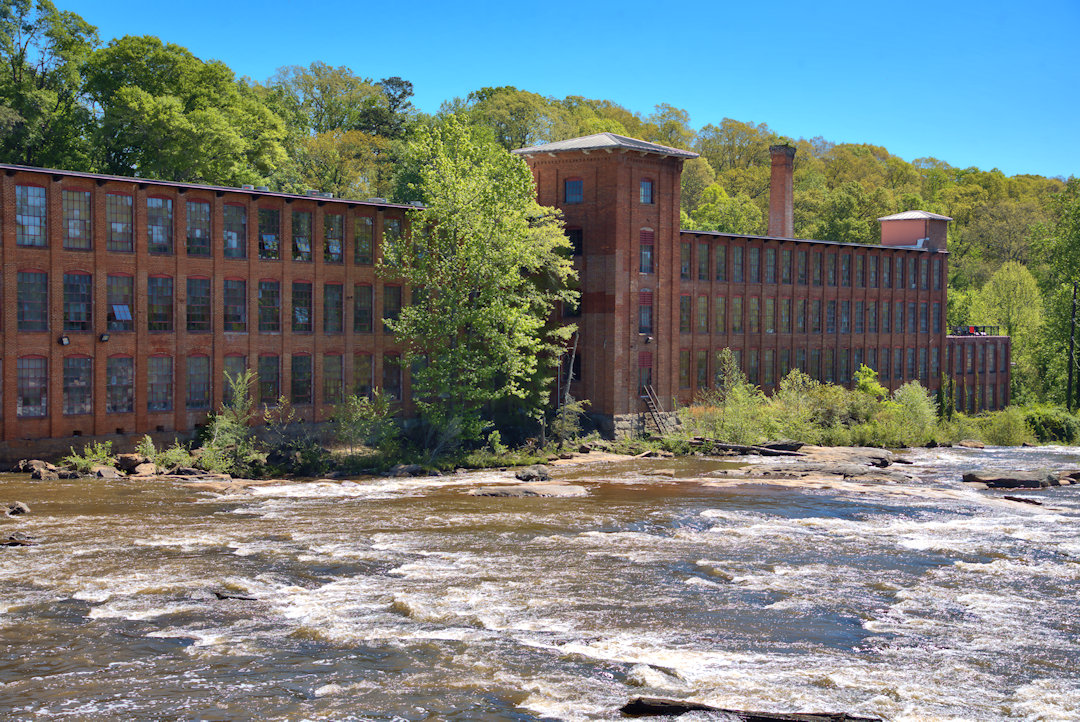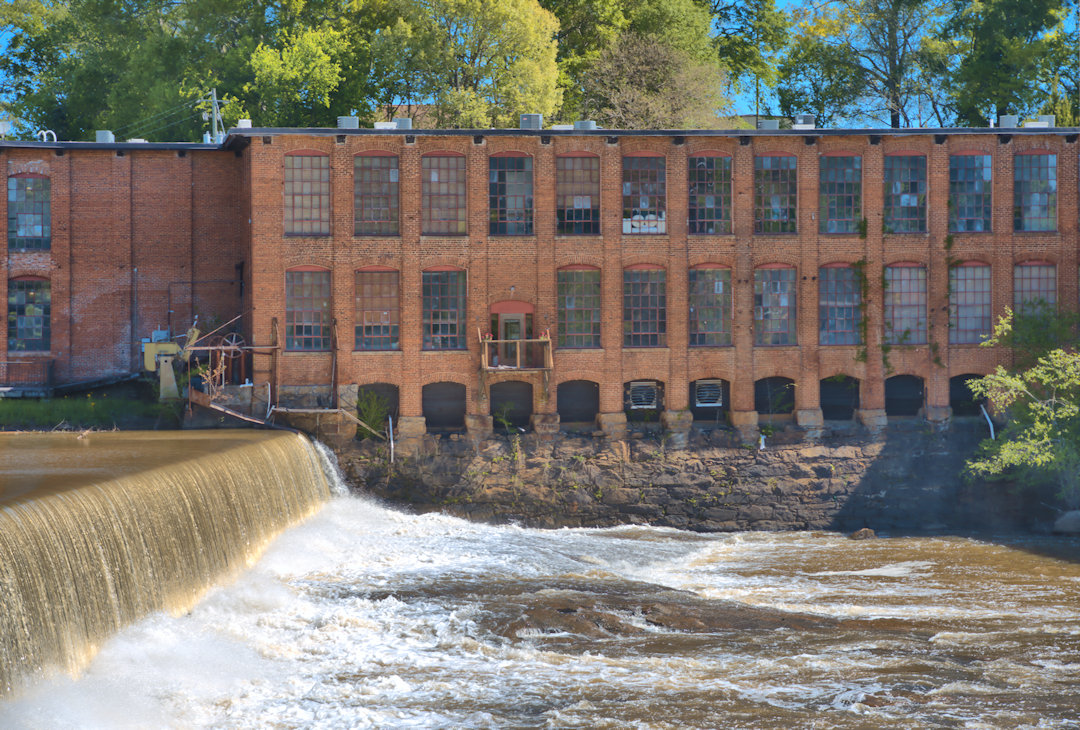Now re-purposed as condominiums, Eagle & Phenix Mills is among the most historic industries in Columbus. Per their website: Cotton milling operations began on this site when William H. Young established the Eagle Mills. In 1860 when Mr. Young absorbed the nearby Howard Factory, Eagle Mills became the second largest mill in Georgia. The Eagle Mills produced material for Confederate uniforms and other critical goods during the Civil War at the site of our present Mill #1. Because of slow communication a land battle was still being fought in our area after the peace treaty had been signed by Lee and Grant to end the war. Federal forces over-whelmed the defenders of Columbus, crossed the river and burned the Eagle Mills buildings. Mill # 1 was rebuilt in 1869.
The present Mill #1 was rebuilt in 1869 and renamed the Eagle & Phenix Mills to symbolize rising from the ashes. Mill #2 followed in 1872 and portions of Mill #1 in 1885. The other historic buildings remaining on the site are the Boiler House (circa 1878), the Administration Building (circa 1878) and the Machine Shop (circa 1886).
During this period of expansion, the Eagle & Phenix quadrupled its size becoming the largest mill in the south by 1878. The mill was distinctive because it produced over 100 varieties of cotton and woolen goods. Eagle & Phenix was known for its technological sophistication and the services it provided its workers. One of these services was the Eagle & Phenix Bank. Unfortunately, this period of rapid expansion was followed by economic hard times brought about by changes in the market. The mill went into receivership and was purchased by G. Gunby Jordan in 1896. One of Mr. Jordan’s investors was W. C. Bradley. G. Gunby Jordan owned the mill from 1896 to 1915 while W. C. Bradley served on the board. From various correspondences, it seems that Mr. Jordan suggested that Mr. Bradley accept the presidency of the mill. W. C. Bradley did accept the presidency and ultimately owned the Eagle & Phenix Mill from 1915 until 1947.
After ownership passed through various hands in the ensuing years, it was reacquired by the Bradley Company in 2003 and has once again become a symbol of Columbus.
Columbus Historic Riverfront Industrial District, National Historic Landmark









